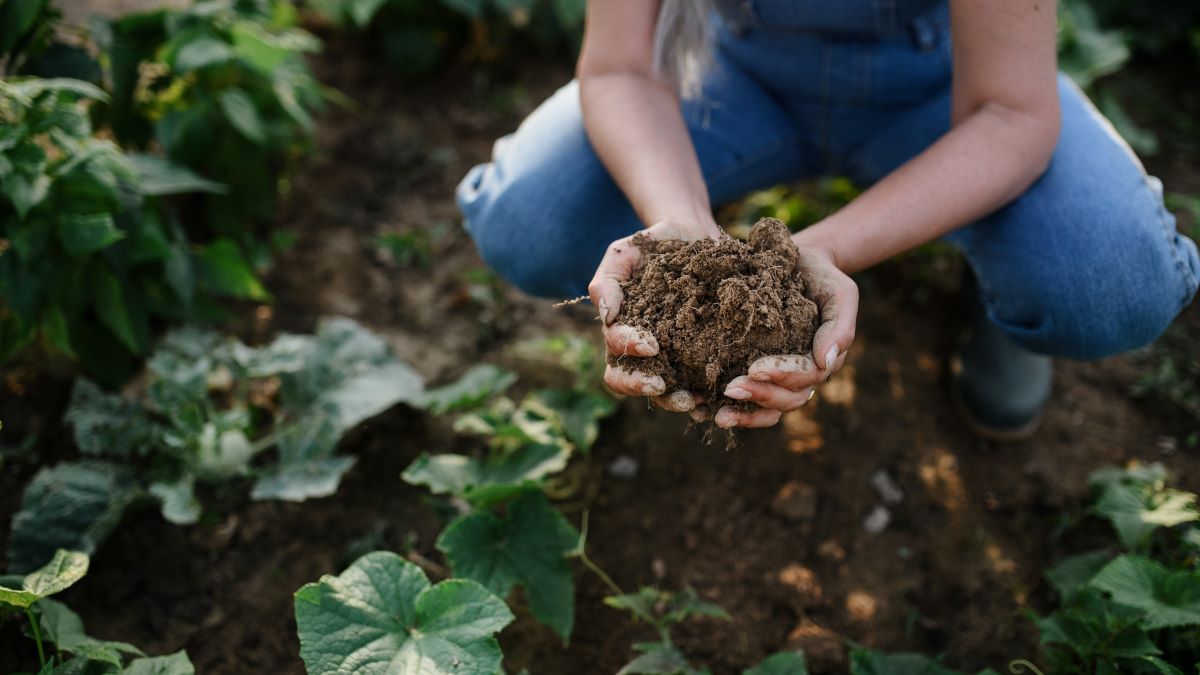
Can Soil Carbon Practices Reverse Climate Change?
One of the world’s best-kept secrets to sustaining life on this planet has been right under our feet. As practiced by communities of color for thousands of years, regenerative agriculture has risen to popularity again, and this time as a potential climate solution. The IPCC released a series of alarming reports, revealing that our food systems contribute to an estimated 21% to 37% of total greenhouse gas emissions. These emissions stem from agriculture, land use, storage, transport, packaging, processing, retail, and consumption.
So it’s not surprising that climate conversations around the world are focusing on agriculture and soil. But can climate change be reversed through soil carbon sequestration and regenerative agriculture?
Deployment at Scale
The answer isn’t so simple. Many factors play into soil carbon practices’ ability to store significant quantities of CO2. Scientists still have questions about how carbon accumulates in the soil.
Government commitments to research and collaboration are needed to ensure estimates of carbon stored in soils are accurate and standardized. Financing is also needed from federal and state governments, carbon markets, and the private sector.
Regenerative agriculture, a frequently-used term relating to soil carbon practices, lacks a standard definition. Some definitions focus on processes, others on outcomes, and some on both.
The most referenced processes related to regenerative agriculture include:
- Integrating crops and animals,
- Using no-till agriculture,
- Stopping or reducing the use of synthetic fertilizers and pesticides, and
- Planting cover crops.
The most referenced regenerative agriculture outcomes include:
- Enhancing carbon sequestration,
- Improving soil health,
- Increasing biodiversity,
- Improving water resources, and
- Increasing the social and economic well-being of communities.
This ambiguity surrounding what regenerative agriculture means creates multiple challenges regarding scientific research, food certifications, and the resulting distrust from confused consumers. It also risks exploitation of the term for marketing or profit (i.e., greenwashing). Without a clear definition, developing policies and certification programs and providing carbon credits to farmers is difficult.
A Regenerative Reckoning
Before regenerative agriculture can bring about meaningful change, the disagreements about what it means, why it results in carbon sequestration, and who benefits must be addressed by stakeholders including policymakers, NGOs, researchers, funders, and advocates.
Today, modern agriculture practices, policies, and institutions predominantly benefit the largest and best-resourced farms. And they disproportionately burden small-scale farmers, farmers of color, and individuals in the Global South. These communities, which experience most of the burden of climate change (i.e., increasing food insecurity), are the same people who have been practicing regenerative agriculture for generations. Deploying regenerative practices for climate action allows us to repair our relationships with the land and with each other. We can do this by allowing these communities to lead as the experts on these approaches and advocate for them to receive non-climate benefits and reparations for past injustices.
What Can You Do?
Finding clear ways to support meaningful climate action is never an easy task. With so much information available, joining organizations with active members can help bring about tangible change. Local chapter programs are a great way to bring these solutions to your community.
The Foundation for Climate Restoration’s Local Chapter Program is one way to learn while taking meaningful action. Through programs like these, you can join in transformational advocacy, which provides you with the skills you need to successfully engage with elected officials and support soil carbon bills, such as the Healthy Soils Healthy Climate Act of 2021 or the Justice for Black Farmers Act, among others.
In addition to advocating for supportive policies, you can also join a local community garden and begin implementing regenerative gardening practices. Community gardening offers opportunities to foster relationships while promoting local food production and food security. Community-scale composting programs are another way to support soil health in your neighborhood gardens.
Ultimately, soil carbon practices and regenerative agriculture have significant potential to remove carbon from the atmosphere. The potential co-benefits include food security, enhanced biodiversity and species conservation, nutritional improvements in the food we eat, and reduced health and safety risks for farmers globally. But like other solutions to climate change, soil carbon practices and regenerative agriculture are not silver bullets. These approaches must be combined with comprehensive climate action that ensures we move off of fossil fuels, significantly reduce our greenhouse gas emissions, adapt to our changing climate, and address the legacy emissions already in our atmosphere.
Interested in learning more about soil carbon practices and regenerative agriculture? Download the Foundation for Climate Restoration’s Soil Carbon Practices White Paper.
About the Author
Delaney Pues is director of Solutions, Equity & Stewardship at the Foundation for Climate Restoration. She focuses her work on addressing key environmental and humanitarian challenges in the current world. Through community engagement, education, research, and advocacy, she is dedicated to increasing the awareness of and focus on the intersectionality between the climate crisis and inequality for oppressed groups.
This article was originally published on June 24, 2022.
creditSource link




